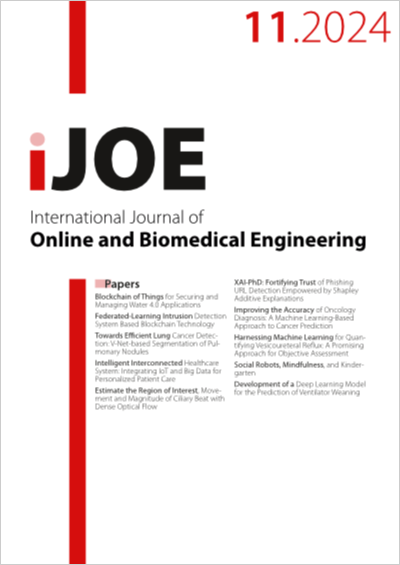Estimate the Region of Interest, Movement and Magnitude of Ciliary Beat with Dense Optical Flow
DOI:
https://doi.org/10.3991/ijoe.v20i11.48029Keywords:
CBF, Dense Optical Flow, FFT.Abstract
In this study, we analyze mucociliary transport (MCT) by measuring the magnitude and identifying regions of ciliary beats using high-frame-rate microscopic videos. Our methodology, integrating dense optical flow (DOF), connected component labeling (CCL), Butterworth filter, and Fast Fourier Transform (FFT), captures ciliary movement and magnitude. We focus on region extraction, quantification of ciliary activity, and classification of power and recovery strokes in ciliary beat frequency (CBF), which are crucial for evaluating MCT efficiency. Our approach was able to extract the ciliary region semi-automatically, obtain the CBF, and visualize the ciliary movement in each frame. Despite dataset challenges and limited ground truth, our approach shows a promising result for ciliary dynamics research and medical diagnostics. We hope for future open-source datasets with ground-truth ciliary beat patterns to enable developing and evaluating automated ciliary analysis techniques, leading to improved assessment.
Downloads
Published
How to Cite
Issue
Section
License
Copyright (c) 2024 BEDY PURNAMA, Muhammad Daffa Khairi, Imamura Kosuke, Miki Abo

This work is licensed under a Creative Commons Attribution 4.0 International License.



